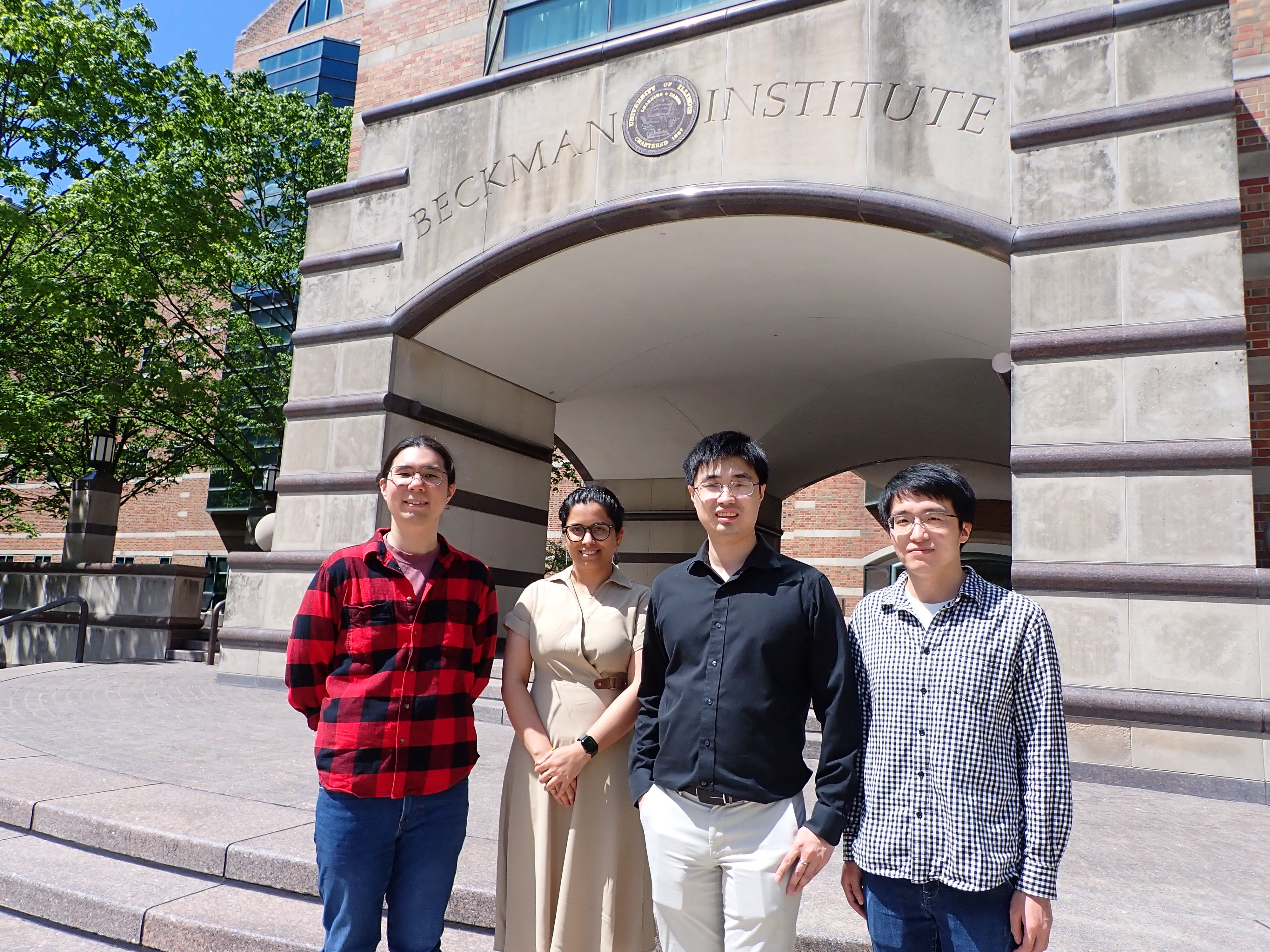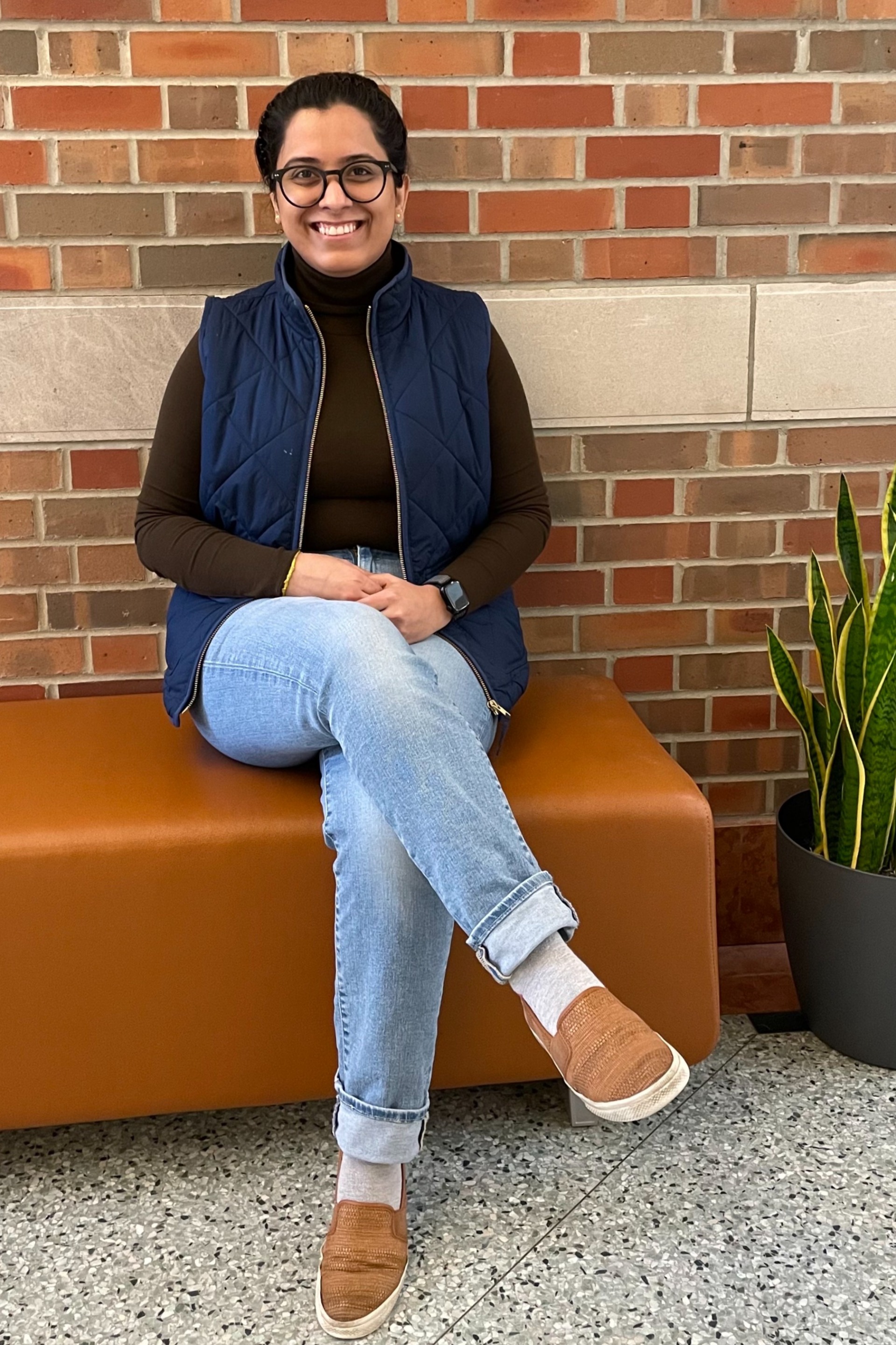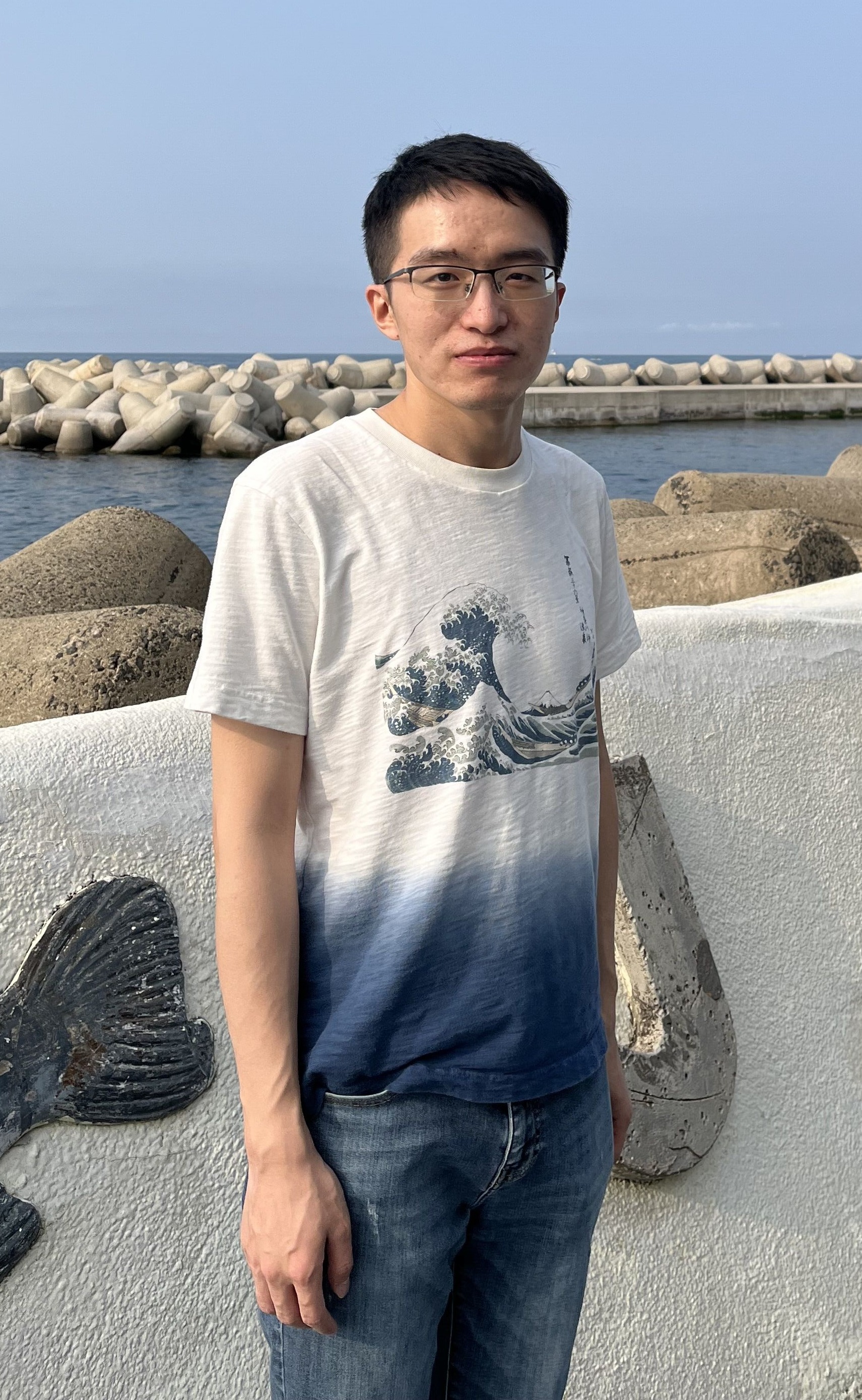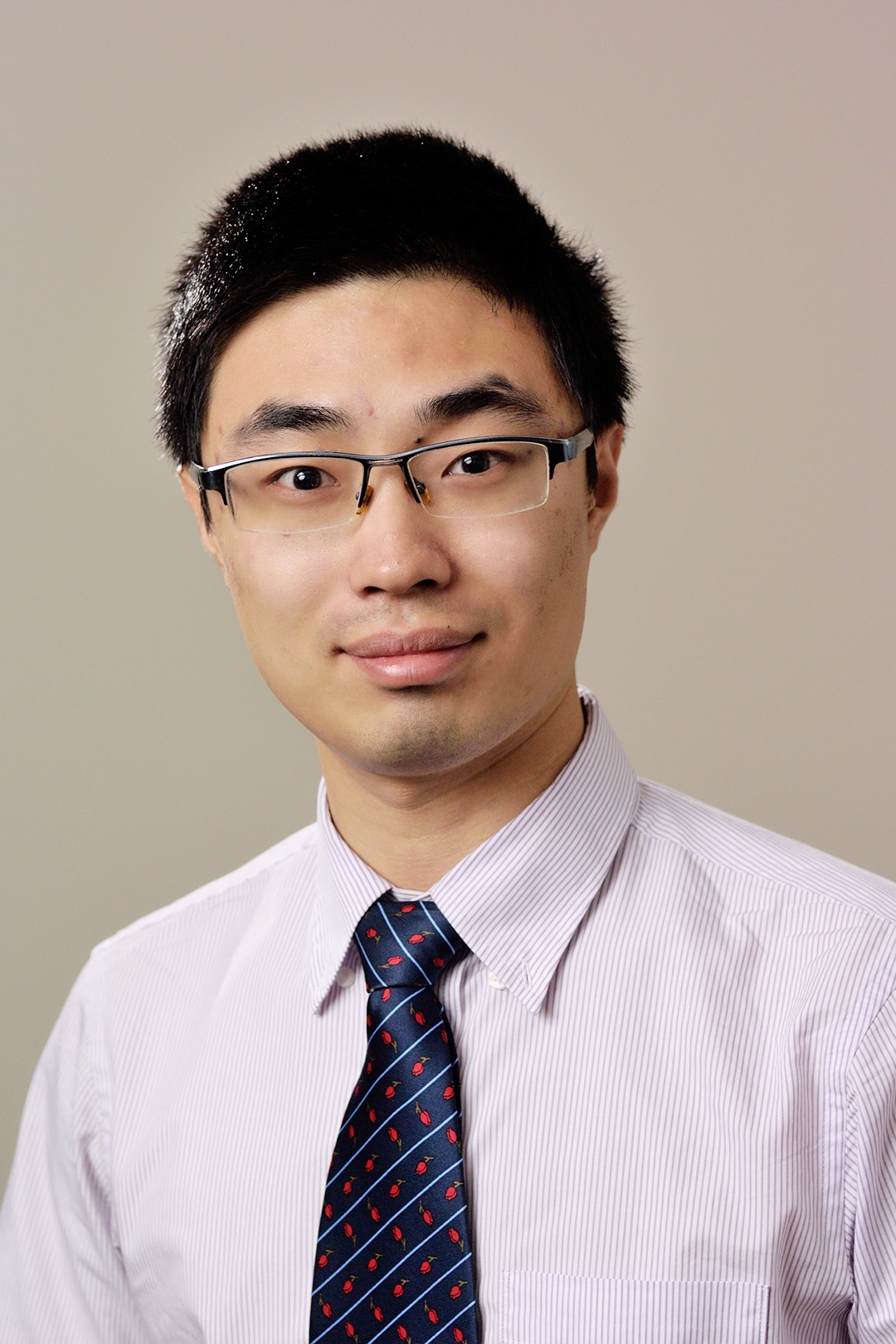Article
 The 2024 cohort of Beckman postdoctoral fellows. From left: Hsi-Chun Chao, Hemani Chhabra, Yibo Zhao and Xiao Huan. Credit: Lauren Otolski, Beckman Institute Communications Office.
The 2024 cohort of Beckman postdoctoral fellows. From left: Hsi-Chun Chao, Hemani Chhabra, Yibo Zhao and Xiao Huan. Credit: Lauren Otolski, Beckman Institute Communications Office.In fall 2024, the Beckman Institute Postdoctoral Fellows Program will welcome four researchers committed to interdisciplinary discovery. The research fellows will advance genetic data storage with DNA origami, fabricate dynamic 3D-printed colors from a single ink and create molecular maps of the brain and investigate neurochemicals related to neurodegenerative diseases like Alzheimer’s.
“This fellowship will significantly impact me by providing the resources and support necessary to conduct my research. Working alongside experts from diverse fields at the Beckman Institute will significantly advance both my personal and professional development,” said Xiao Huan, one of the three recipients of the 2024 Beckman Institute Postdoctoral Fellowship.
The fellowship has supported an annual cohort of researchers since the Arnold and Mabel Beckman Foundation established it in 1991.
Since 2015, the institute has supported one Beckman-Brown Interdisciplinary Postdoctoral Fellow per year. Funded by the Arnold and Mabel Beckman Foundation, this opportunity honors Arnold Beckman as well as the institute’s founding director, Professor Emeritus Theodore “Ted” Brown.
Fellows across both awards are chosen in accordance with the core values of the Beckman Institute: excellence, collaboration, integrity, transdisciplinarity, exploration and diversity.
Continue reading to learn more about the 2024 recipients and their research.
Beckman Institute Postdoctoral Fellows
Hemani Chhabra: DNA storage with a twist
Chhabra earned her Ph.D. in theoretical and physical chemistry from the University of Oxford in 2022 and has held a postdoctoral research position in the Department of Physics at the University of Illinois Urbana-Champaign since fall 2022.  Hemani Chhabra. Credit: Elizabeth Bello, Beckman Institute Communications Office.
Hemani Chhabra. Credit: Elizabeth Bello, Beckman Institute Communications Office.
With increasing technological needs, the demand for global data storage is skyrocketing. Chhabra believes that DNA data storage, a sustainable and eco-friendly alternative to traditional rewritable data storage systems, may be the answer. The intricately folded nanostructures of DNA along with the ability to add or remove different proteins and defects make so-called “DNA origami” an ideal medium for storing, reconfiguring and customizing data.
“I will be working with the [Aleksei] Aksimentiev, [Charles] Schroeder, and [Martin] Gruebele labs to develop reconfigurable DNA data storage systems, inspired by Lego blocks. This will involve combining computational design with experimental techniques, but with a little twist,” Chhabra said.
In her project “Fold, store, rewire: Reimagining data Storage through DNA origami,” Chhabra will design DNA origami with strategically placed defects to reshape its structure and improve functionality. Chhabra will use modeling simulations to explore molecular interactions of defect-infused DNA origami, allowing her to assess data storage capacity, evaluate origami stability and investigate structural changes caused by modifying custom proteins and synthetic polymers.
Xiao Huan: 3D printing colors inspired by chameleons
Huan earned his Ph.D. in mechanical engineering from the University of Hong Kong in 2023. He is currently a postdoctoral researcher in the Illinois Department of Chemical and Biomolecular Engineering.  Xiao Huan. Image provided by Huan.
Xiao Huan. Image provided by Huan.
Huan will use artificial intelligence, 3D printing techniques and a special class of self-assembling polymers called bottlebrush block copolymers to produce dynamic structural colors from a single ink.
This approach offers an eco-friendly alternative to traditional chemical dyes that often act as pollutants. Unlike harmful chemical dyes, structural colors are produced by materials with nanostructures that interfere with visible light and are abundant in biological systems including chameleon skin and blue morpho butterfly wings.
“I’m particularly excited about collaborating on an interdisciplinary project with multiple research groups covering synthesis, modeling, rheology, artificial intelligence and 3D-printing techniques,” Huan said.
Huan will collaborate with Beckman researchers Charles Sing, the Donald and Dolores Morris Professional Scholar, Director of Graduate Studies and professor in the Department of Chemical and Biomolecular Engineering; Ying Diao and Damien Guironnet, professors of chemical and biomolecular engineering; Nicholas Jackson, a professor of chemistry; and Simon Rogers, a professor of chemical and biomolecular engineering.
Yibo Zhao: Unraveling molecular fingerprints of the brain
Zhao is a Ph.D. student in electrical and computer engineering at Illinois. He expects to graduate in 2024 and will begin his postdoctoral position in the fall.  Yibo Zhao. Image provided by Zhao.
Yibo Zhao. Image provided by Zhao.
“I am most excited about the opportunity to work on cutting-edge brain mapping technology to unravel the mystery of the brain, in close collaborations with world-class scientists in the Beckman Institute,” Zhao said.
Magnetic resonance imaging and functional MRI provide detailed images of the brain’s structures and functional activity, but neither technique can provide high-resolution molecular images of the whole brain without using invasive methods.
To investigate molecular mechanisms of brain function, Zhao will use magnetic resonance spectroscopic imaging, or MRSI, an imaging technique capable of noninvasively mapping molecules in the brain.
Traditional MRSI is limited by many technical barriers so Zhao plans to use a novel approach called SPICE, or Spectroscopic Imaging by exploiting spatiospectral CorrElation, developed by his faculty adviser Zhi-Pei Liang, the Franklin W. Woeltge Professor of Electrical and Computer Engineering.
SPICE has whole-brain coverage, high spatial resolution, ultrafast scan time, and can dually map brain molecules like metabolites and neurotransmitters.
Beckman-Brown Interdisciplinary Postdoctoral Fellow
Hsi-Chun Chao: Exploring how sugar-lipid complexes mediate neurodegenerative diseases
Chao earned his Ph.D. in chemistry from Purdue University in 2022 and works as a research scientist designing and developing synthetic molecules at Eli Lilly and Company. Chao will join the Beckman Institute in the fall, and said he is excited to experience the institute and collaborate with Beckman scientists.  Hsi-Chun Chao. Image provided by Chao.
Hsi-Chun Chao. Image provided by Chao.
Researchers have shown that neurodegenerative diseases like Parkinson’s disease and Alzheimer’s disease are related to abnormal protein accumulations in the brain and other neuronal dysfunctions.
Glycolipids, or sugar-lipid complexes, are molecules that have been reported as central mediators in Parkinson’s disease and show abnormal activity in Alzheimer’s-related cases.
Studying glycolipids in the brain is difficult, but Chao plans to collaborate with computational expert Fan Lam, director and professor of bioengineering; Jonathan Sweedler, acting head, James R. Eiszner Family Chair, and professor of chemistry; Rhanor Gillette, Professor Emeritus of molecular and integrative physiology; and Hyun Kong, the Robert W. Schaefer Professor of Chemical and Bioengineering.
Sweedler developed an analytical technique used for in-depth chemical characterization, called single cell mass spectrometry, which Chao will use to clarify the functional role of glycolipids in neurodegeneration.
Beckman Institute for Advanced Science and Technology